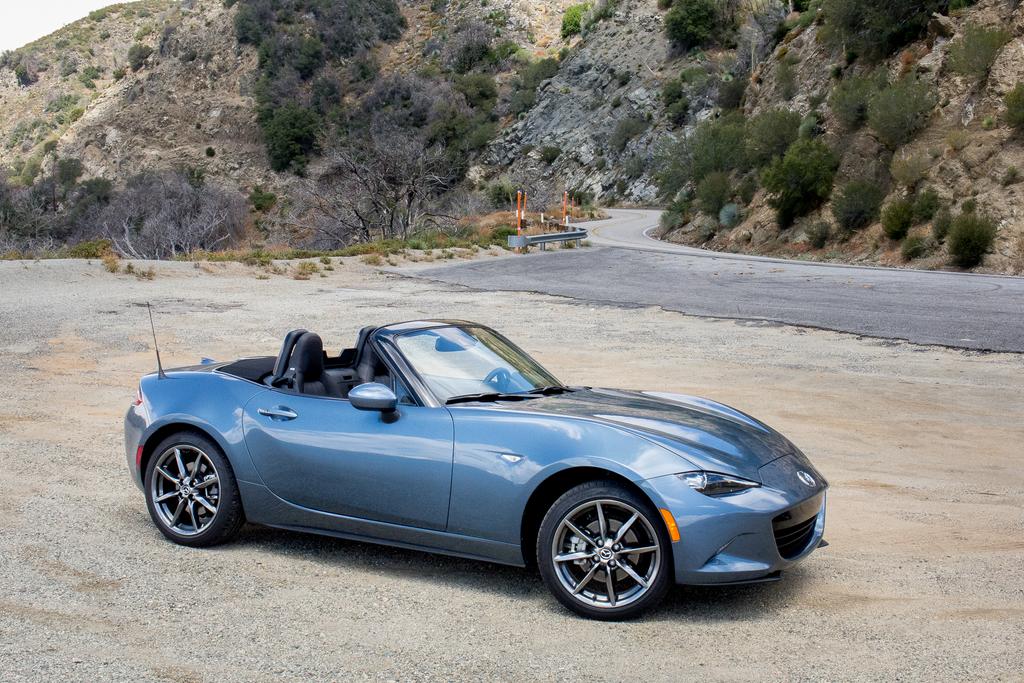
People in my line of work have been known to write raves about Mazda MX-5 Miatas, and to purchase them, as I have. Now that I've driven Club and Grand Touring versions of the redesigned 2016 Miata on canyon roads outside Los Angeles, it appears I'm going to do the first again, and possibly the second.
Declaring the latest version of a particular car model the "best ever" is often an empty headline. Automakers improve their models over time, and even if they take a step or two back in some ways, the overall redesigned effort usually represents the best ever. But in the case of the redesigned 2016 Miata, the fourth generation, the improvements are greater and more numerous than in any generational change to date. By turning back the clock in some ways and pushing the needle forward in many others, Mazda has created what is unquestionably the best Miata ever. If anything, it might be too good.
Related: 2016 Mazda MX-5 Miata Rated at 30 MPG Combined
To drive a Miata, of any generation, is to recognize that the fun goes beyond the pleasure many find in a small car and/or a convertible. The Miata has always been about the visceral experience of a simple, front-engine, rear-wheel-drive car with equal (or nearly) front/rear weight distribution and balance that can carve corners and slide about with a degree of controllability that makes it safe in everyday driving. The best sports cars feel like an extension of the driver, and this is where the Miata has shone where some cars priced two or three times more have failed.
Exterior
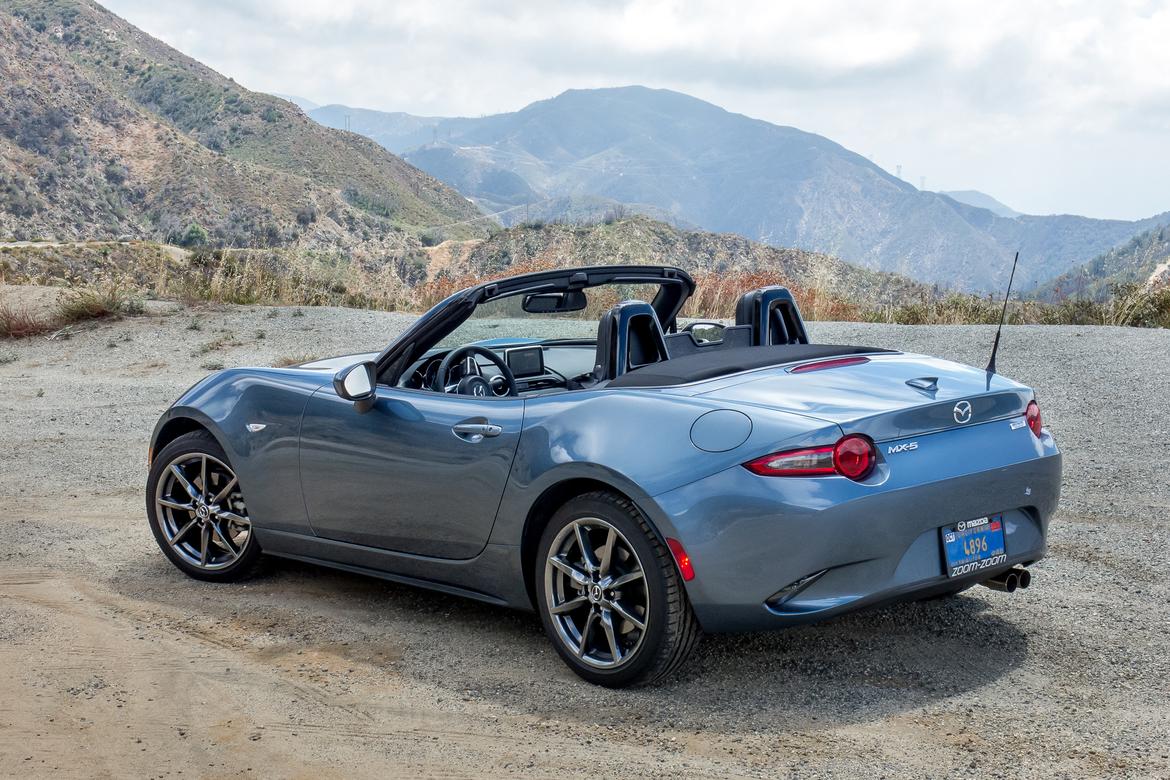
2016 Mazda MX-5 Miata; Cars.com photo by Joe Wiesenfelder
But purists say the Miata had lost some of its soul with previous redesigns, particularly the third generation, which suffered both weight and size gains along with the least appealing styling. The 2016 addresses all that, with arguably the best styling yet and overall length that's shorter than the first generation by more than an inch. The car is wider than the 2015 to increase track width and stability, and its weight is down roughly 150 pounds and is now in line with the first- and second-generation cars with 1.8-liter engines. (Only the original, 1.6-liter version was lighter, but the displacement increase was worth its weight in, well, weight.)
How It Drives
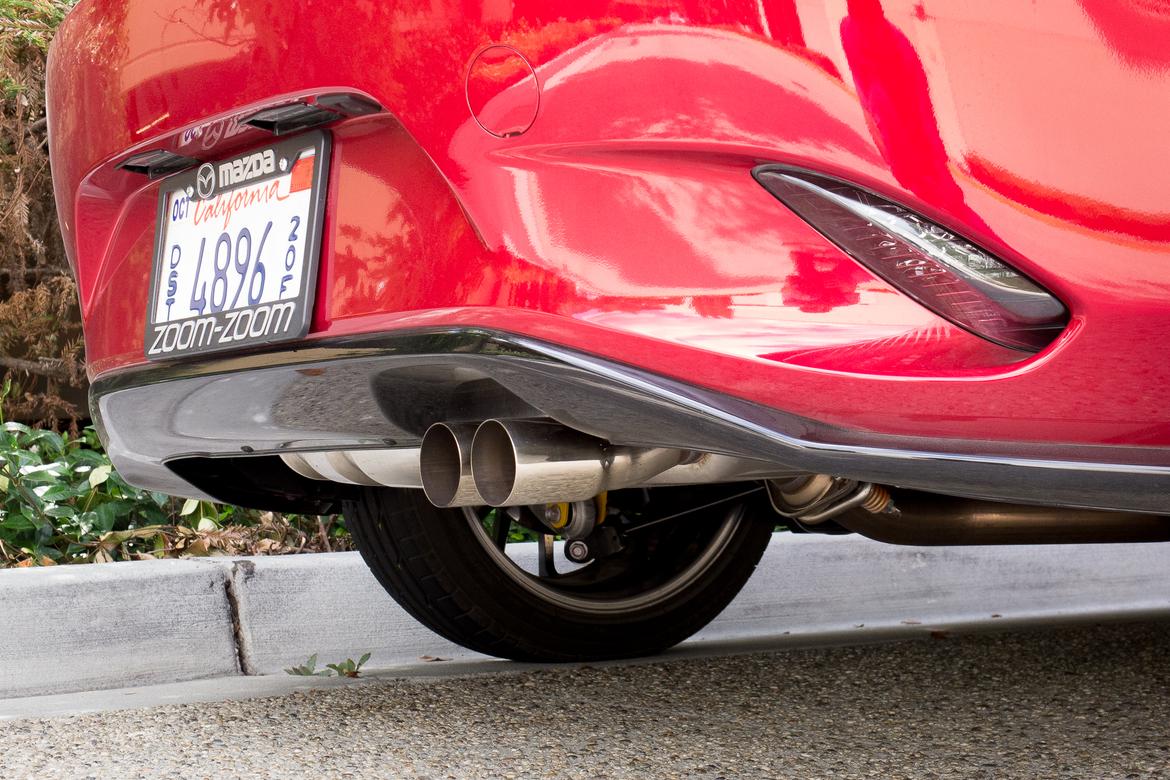
2016 Mazda MX-5 Miata; Cars.com photo by Joe Wiesenfelder
For 2016, an efficient SkyActiv 2.0-liter four-cylinder replaces the earlier 2.0-liter, but Mazda has lowered it about a half inch — which lowers the car's center of gravity — and moved it almost an inch rearward, which shifts more of its mass behind the front axle where you want it. The more centered mass lowers the car's polar moment of inertia, meaning it requires less force to rotate on its axis - to change direction, in essence. The 2016 once again rivals the first generation in this respect.
All of these changes do indeed make the 2016 feel lighter, more grounded and nimble. The 2016 brings the Miata's first application of electric power steering. Unlike Mazda's front-drive models, the Miata's assist motor is on the steering rack rather than the column, which is the only way to get the kind of performance and feel for which hydraulic assist is respected. In the 2016, the new system does the trick, though it's tuned differently. It's noticeably comfortable on center and easier to pilot on the highway, a characteristic that's sure to draw complaints of softness. Turn the wheel past center, and there's nice progressive torque buildup as the steering angle increases. The steering snaps back to center sharply and completely. All told, I'm good with it.
The car's overall dynamics have definitely changed. Turn-in feels slower, in part because the outside rear wheel no longer toes out initially before toeing back in under sustained cornering forces. The alignment's response is more consistent, and as a result, so is the car's response when you throw it into a corner. And throw it into a corner you will. The car demands it.
What the Miata really needs is a relaxed stability system mode. Even we who went most of our lifetimes without the stability safety net now appreciate a way to tone it down a bit without turning it off entirely.
The Grand Touring rides very comfortably despite the car's athletic nature. The base Sport shares the same suspension and should ride similarly but wasn't available to drive. The middle trim level, Club, has a sport suspension with Bilstein shock absorbers and a limited-slip differential that is also comfortable considering what it delivers: a more direct, connected feel and less — but still present — body roll, by design. The Club also adds a front shock-tower brace, but sacrifices all these mechanical upgrades if you choose the optional automatic transmission.
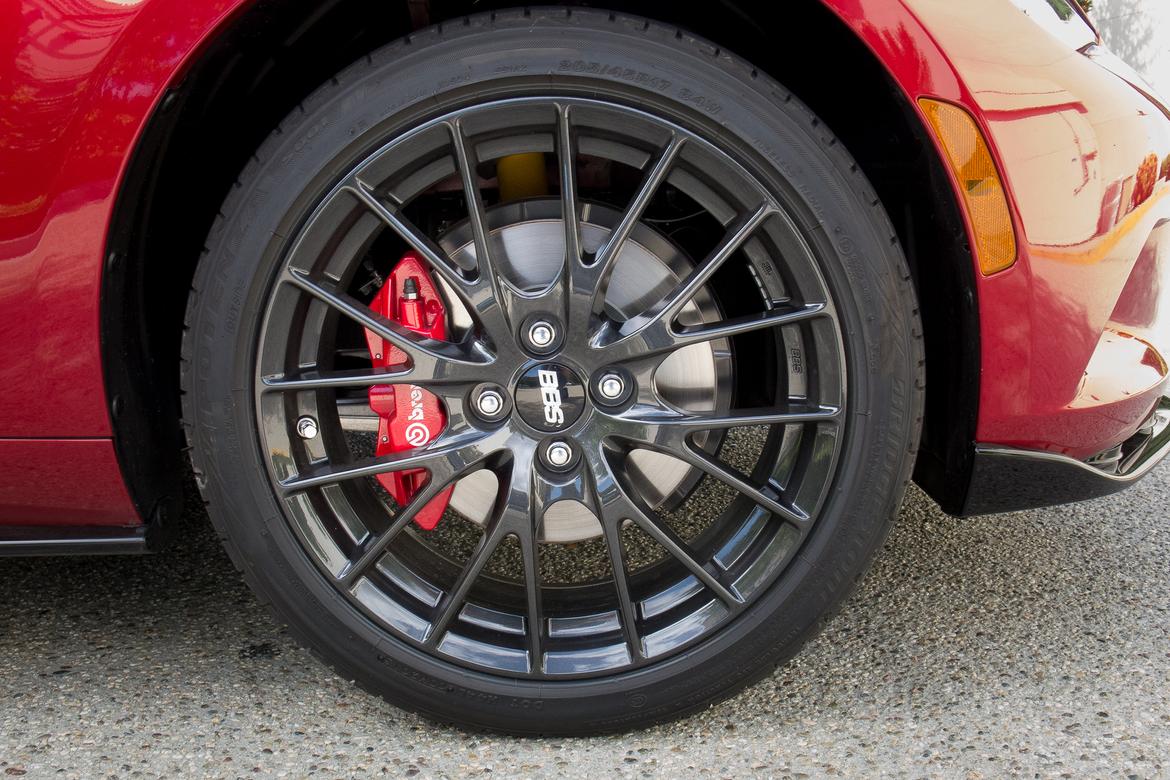
2016 Mazda MX-5 Miata; Cars.com photo by Joe Wiesenfelder
Optional on the Club, the Brembo/BBS Package adds Brembo-brand front brake calipers and BBS-brand wheels, the same size as the standard Club and GT wheels, 17 inches, but a different style with a gloss-charcoal finish.
The Brembo brakes provide a stronger bite and better pedal feel, but the stock single-piston brakes are nice and linear and didn't leave me wanting in street driving.
With 155 horsepower, the new engine has 12 hp less than the 2015 but 8 pounds-feet more torque, a peak of 148 pounds-feet at 4,600 rpm. With the weight loss, the car feels a bit quicker, and certainly quick enough. Our friends at "MotorWeek" clocked a zero-to-60 mph time of 6.8 seconds on a slick track, and word on the street is you can get closer to 6 seconds and rarely as long as 7, with the standard six-speed manual.
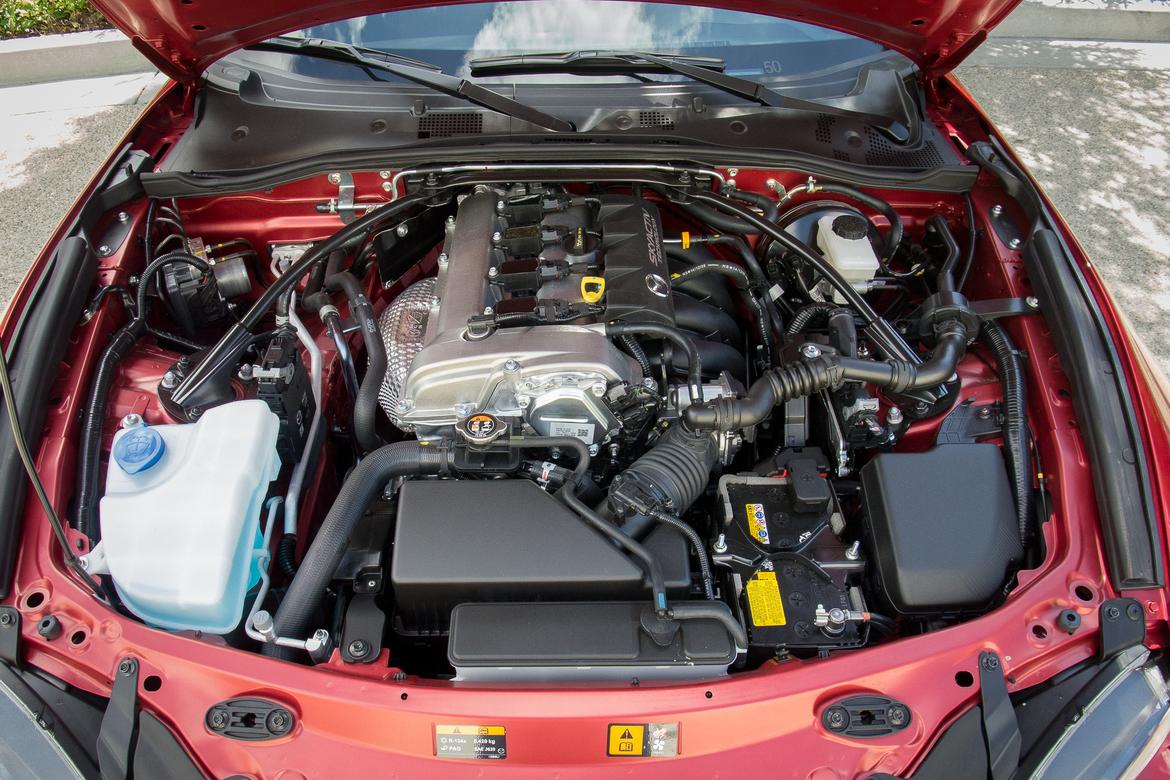
2016 Mazda MX-5 Miata; Cars.com photo by Joe Wiesenfelder
As always, the shifter is a relatively short thing with short-enough throws and a good feel, but it still doesn't quite compare to the shifter in the Scion FR-S/Subaru BRZ, which has ruined me for any other stick. Mazda has changed the gear ratios across the board, but everything still feels exactly right. The engine has a nice, broad torque curve that allows it to climb modest inclines in high gears at low rpm.
Even the six-speed automatic is well executed. It taps into the power nicely, doesn't dally on kickdown and adds a Sport mode that would be pointless with the stick. If you can't wrap your mind around pushing the stick forward to downshift when in manual mode, you can rely instead on the steering wheel's shift paddles, which, incidentally, allow 2nd-gear acceleration from a stop. All good stuff for what it is, but if you don't get the manual, you're sorta missing the point here.
To understand how good the Miata has always been, look no further than its modest engine power — or specifically its modest power-to-weight ratio. Would we welcome more power? Certainly. But this degree of fun comes from the entire package. Prodigious power is often a crutch automakers shovel into everything from alleged sports cars to SUVs in order to compensate for other deficiencies. The Miata has more than survived without it. Mazda's North American representatives are mum on whether more power will become available, but a high-ranking Japanese exec (who won't get canned for revealing information) reportedly said more power isn't what the Miata is about. Reading between the lines suggests, at minimum, that more power isn't currently in development if it's a possibility at all.
Interior
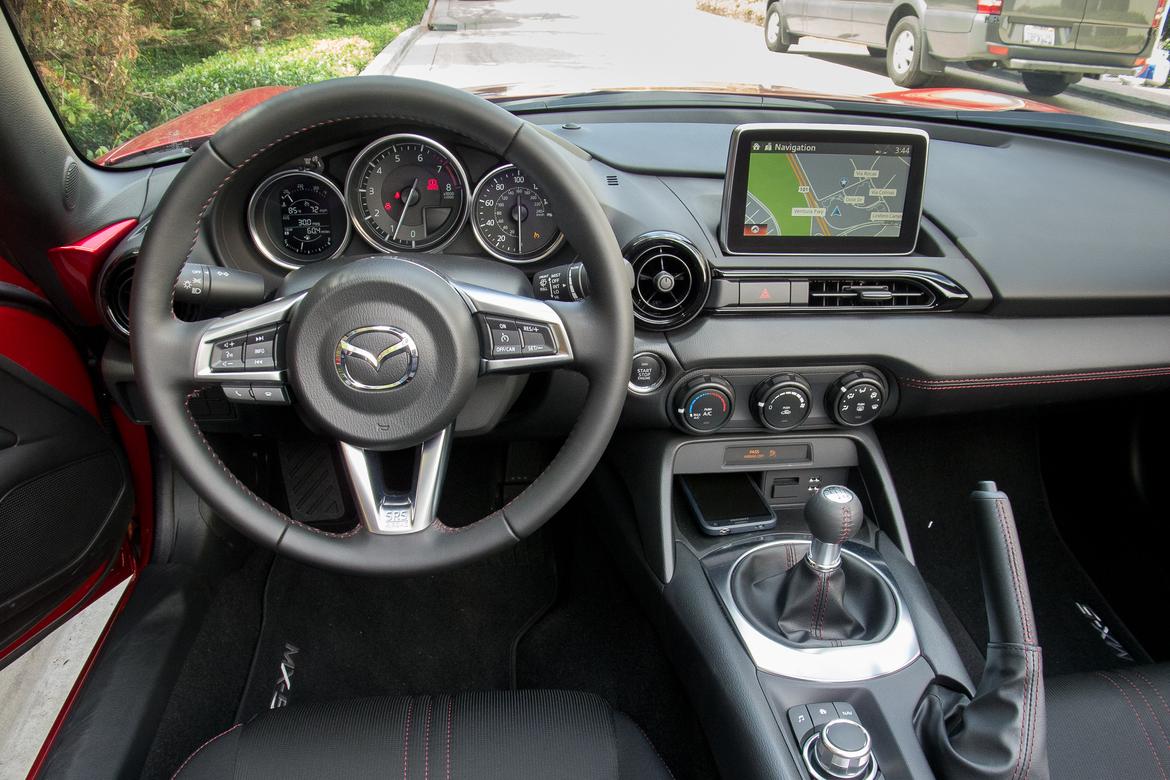
2016 Mazda MX-5 Miata; Cars.com photo by Joe Wiesenfelder
I'll be giving more details soon in a full review, including a rundown of the interior and modern multimedia system. For now I'll say many changes make the interior roomier and more comfortable, even though the published dimensions are about the same as the 2015. The top is easier than ever to open and close, even while seated, and the optional Bose stereo is great.
The only complete misstep I found was wind noise on the passenger's side — a loud whistle with the top up that occurred in two cars, one Club and one Grand Touring, selected randomly from more than a dozen. Mazda needs to get that fixed, pronto.
My only other concern is that the 2016 Miata might be too good.
It hasn't become isolationist like some sporty cars are, so a fun time is still assured, but now it's a little less flappable — such that it might put the gentle four-wheel drift on your highway off-ramp on the other side of the speed limit, or due caution. Maybe a set of all-season tires in place of the excellent Bridgestone Potenza summer tires would make for more low-speed fun. I hope to find out.
If I have to buy a 2016 someday to find out, so be it.
No comments:
Post a Comment